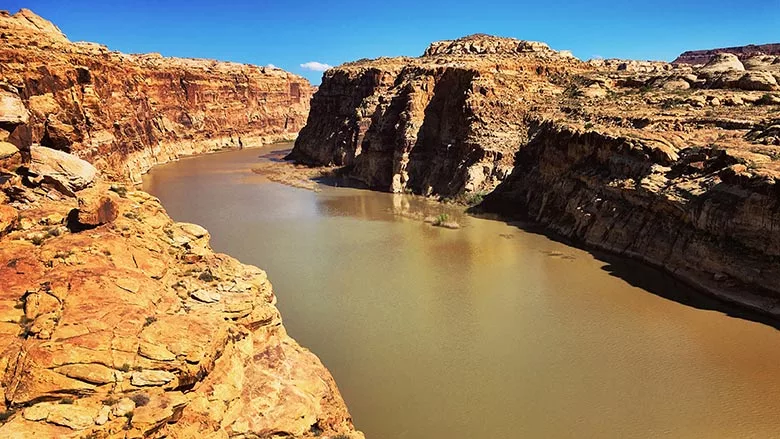For Water Resources, the Future is Now
Colorado River Issues a Legacy of Near-Term Thinking

For almost 60 years, Glen Canyon Dam has cut the flow of sediment down the Colorado River. As drought has shrunk Lake Powell, the remaining water has become siltier.
Source: Getty Images
I read every story and column about the Colorado River that comes down the pike. Part of my interest is professional: They pay me to know things about water and the discussions around it. But I also have a fascination about the topic, akin to craning my neck around to see a car wreck.
As you can see from my car wreck analogy, I have dim prospects for us to work together to share such a contentious resource. States and other stakeholders can’t agree. Let me say up front that I don’t have the answers to water management in the U.S. West. I do know, however, that folks not looking for solutions likely won’t find them.
Which leads me to a recent column in “The New York Times.” Dale Maharidge, a Columbia University professor, argues for boring tunnels into the Glen Canyon Dam to drain Lake Powell. The dam, which creates the lake straddling the Utah-Arizona border, prevents large amounts of silt from flowing down the river. Maharidge describes a staggering amount of silt deposited in the lake over 60 years, and how dense the lake is with it now that historic droughts have depressed water levels.
Reasonable people can disagree with his approach, but reasonable people can also bring their own suggestions about how to manage the river in a fair way for the millions who depend on it.
Setting aside his argument, though, one quote Maharidge uses sticks with me. Floyd Dominy, the “father” of the Glen Canyon Dam, was asked about this sediment issue several years after the dam went into service in 1966. Dominy, who led the Bureau of Reclamation’s efforts to finish the dam, replied: “Let the people of the future worry about it.”
The future seems to have arrived.
Dominy, a passionate advocate for using resources like rivers, represents a time when Americans looked out and saw no end to the resources our country offers. Now, we can see even unimaginably large resources, like the Colorado River, can indeed have an end if not used and managed properly.
Recent heavy rains and snows in the West can, hopefully, take the edge off historic droughts. But they’re not over. We need to find solutions California farmers, residential water customers, Native American tribes and other stakeholders can accept. And we can’t lose sight of what the river will make clear if we do nothing, that it is a finite resource and we simply act as stewards.
I close this column on a bright note, one of my favorite sayings (because I see it play out time and again): You can always count on Americans to do the right thing after they have exhausted all other possibilities. I do, ultimately, think we’ll get all stakeholders to the table. We’ll figure out a way to update our century-old water policies for the 21st century — and beyond. I just hope the Grand Canyon doesn’t have to become a stagnant ditch before that happens.
What do you think? Have you followed news about modernizing the Colorado River Compact? Send an email to verduscoj@bnpmedia.com.
Stay safe out there, drillers.
Step Up to the Mic
Interesting project? Industry wisdom to share? Email verduscoj@bnpmedia.com to be considered for a guest spot the Driller Newscast.
Looking for a reprint of this article?
From high-res PDFs to custom plaques, order your copy today!


